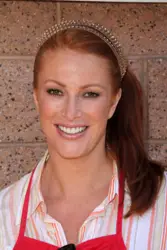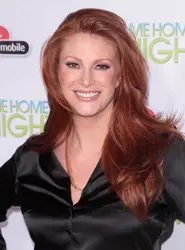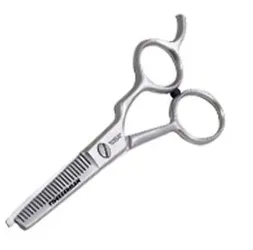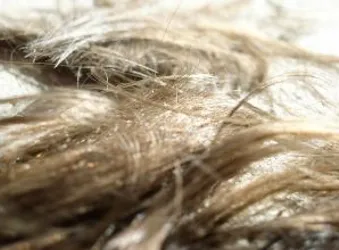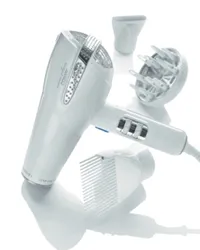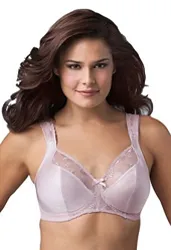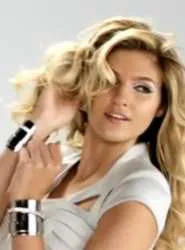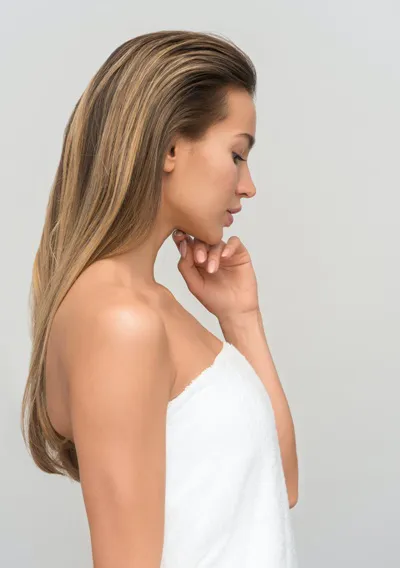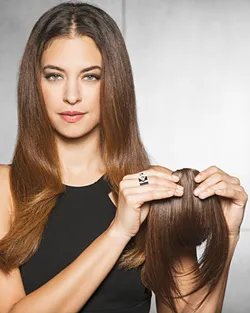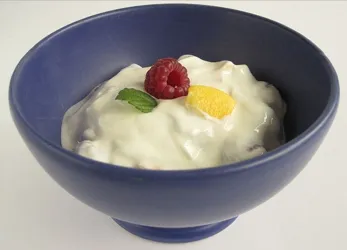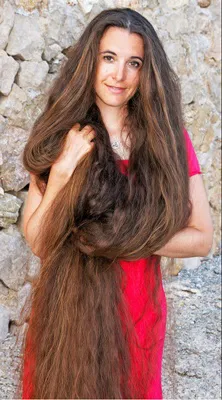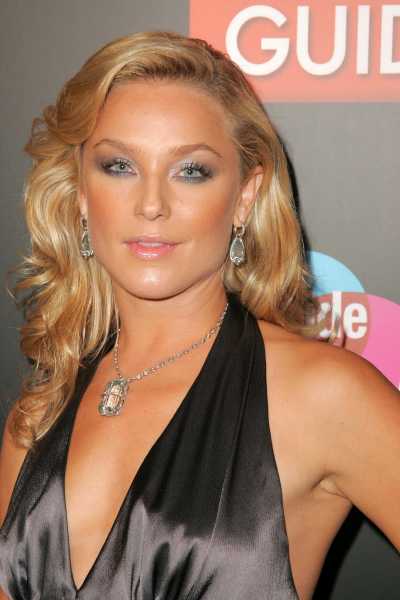
How To Bust Hair's Split Ends
Introduction
Contrary to all popular opinion, hair care advertisements and a variety of hair industry promises, split ends can not be permanently reversed. This is true regardless of your hair type, texture or length. The best bet for dealing with split ends to avoid them before they occur. Once you have split ends you can temporarily seal them together with a wide range of hair care products which camouflages their appearances, but you can not repair them. Temporarily sealing split ends usually means the time in-between hair washing sessions. A temporary sealer is usually applied to damp hair before it's dried. When hair is wet, any sealant will be dissolved. The cause of split ends and related hair breakage can include stress, certain medications, chemical damage and many other factors ranging from improper daily hair handling, styling and overall hair care. What Are Split Ends?Split ends are officially known as trichoptilosis which is from the Greek word "hair" and the New Latin word "arrangement of feathers in definite areas." Split ends refer to the splitting or fraying of the hair-shaft due to a wide range of causes. Split ends can just as easily occur on straight, wavy, curly or kinky hair. It can also occur on hair which is very short or very long. Although damaged hair will often develop more severe splits than healthy hair, there are a wide range of causes of split ends ranging from improper daily hair handling to overuse of hair chemicals, color, hot tools and overuse of hair styling products. Split Ends Due To Regular Hair HandlingListed below are some of the common causes of split ends due to regular daily hair handling. To prevent split ends from occurring in the first place you may wish to incorporate some of these tips in your daily hair handling. 1. Improper daily hair handling The simple act of allowing your hair to get caught under rough collars such as shirt, dress, jacket or coat collars. Hair can also develop split ends when caught under handbags, shoulder bags, back packs or any type of bag.
If you find your hair getting caught under your collars, entangled in various bag straps, or trapped in coat zippers, snaps or buttons then adjust your hair behaviors. You can either wear your hair up or consciously pulled out of the way of the offending items. Even better, select other items to wear if your hair is consistently getting caught, ripped or split. The key is paying constant attention to any hair handling behaviors which may damage your delicate ends. Ironically the most potential split ends can occur through improper daily hair handling. 2. Wearing hair down in windy environments One of the most damaging things you can do to your hair is allowing it to blow freely in the wind. While it may feel great to have the wind whipping through your hair as you walk, jog or drive down the highway, that wonderful breeze is causing knots to form throughout the length of your strands. Knotted hair is damaged hair. When the length of the hair becomes damaged it will split, rip and tear. Always protect your hair when you're going to be out in the wind. Even better, always keep a hair friendly clip handy so you can pull your hair up and out of harm's way.
Cleansing Your HairWhen you wash your hair you enter another area where you risk doing accidental damage to tresses. 3. Always detangle before wetting hair The damage may start if you don't carefully detangle your strands before washing. Surprisingly, many people don't take the time to carefully detangle with a hair friendly comb, brush or smooth fingers before wetting hair. Hair is more fragile and prone to ripping, splitting and breaking when wet. If hair contains tangles, knots or snarls when wet, there is a much higher risk of hair becoming damaged. 4. Excessive application of shampoo Hair is more prone to splitting, ripping or tearing when it is over washed or over cleansed with too much shampoo or similar products. It's always best to avoid using undiluted shampoo except on the roots or fringe areas where the most dirt or oils may have collected. Consider using diluted shampoo (DS), low poo formulas (LoPoo), no poo formulas (no poo)conditioner only wash (CO) or water only (WO) cleansers on the bulk of your hair and limit full strength shampoo only on very small areas of your hair.
5. Avoid stacking wet hair on top of the scalp Contrary to popular opinion, one of the worst habits you can form is to pile wet hair on top of your head when it's wet or covered in some type of cleansing or conditioning formula.
As mentioned previously, hair is most fragile when wet and pulling or scrunching it up on top of the head makes it much more prone to ripping, tearing, stretching or snagging. 6. Minimize split ends with a condition-wash-condition cleansing process Take extra precautions by following a Condition-Wash-Condition (CWC) procedure. This means after hair is completely wet, apply full strength or diluted rinse out conditioner from the bottom of the ear lobes down to the ends. After the conditioner is applied to the bulk of the hair, apply full strength or diluted shampoo to the roots down to the top of the ear lobe. The conditioner applied from the bottom of the ear lobes to the ends will act as a protective barrier against the harshness of the shampoo applied to the scalp. 7. Shampoo as infrequently as possible To gain the maximum benefit of hair friendly cleansing, do it as infrequently as possible. Cleansing hair too frequently can be just as potentially damaging as using full strength shampoo formulas, scalding hot water or not detangling before washing.
Shampooing 2-3 times a week is usually all that is necessary to keep scalp and hair properly cleansed. Although it may take time for your scalp and hair to get used to more infrequent cleansing, ultimately it will help protect your ends. Although not everyone will benefit from less frequent cleansing, most will. Detangle and dry carefully8. Detangle hair in the shower while rinse-out conditioner is still applied Rinse shampoo from hair and then rinse out the conditioner. After hair is completely rinsed apply another application of rinse-out conditioner. Using your fingers, a smooth tooth comb or a pick, detangle hair in small sections from the ends up to the roots. Work slowly and methodically to avoid unnecessarily pulling or tugging on wet strands. Unless your hair is fine or thin you really can't use too much conditioner on your hair. Not only does it protect damaged hair from the application of cleansers, it always helps with detangling. 9. Finish with a cool or cold water rinse to close cuticles and protect hair After detangling hair always rinse with lukewarm water to remove the rest of the conditioning formula. Finish with a cool or cold water rinse to close cuticles and protect against rips or tears.
10. Towel blot carefully Once hair is completely rinsed, use fingers in an accordion manner and gently squeeze hair from the roots to the ends to remove excess water. Blot, do not rub hair with a hair friendly towel or even a soft absorbent t-shirt. Avoid rubbing your scalp or hair with a towel. While it may feel great to scrub away, it will rip, strip, snag or fry your hair in no time. You can also use a turban for drying your hair. You may also wish to put a towel on their back and let the hair drip into the towel. 11. Handle wet hair with care After you've shampooed, when/how do you brush/comb your hair? Generally, brushing wet hair is bad for the hair. Hair is most delicate when wet. Brushing tends to stretch the strands. Stretching the strands puts wear and tear, which causes damage, which causes splits. 12. Air dry whenever possible Do you blow dry your hair? The heat and the wind created by the blow fryer really damages hair, too. Any heat styling tool can potentially damage hair. If you feel you must use them, keep the temperature low and exposure time to your hair short. 13. Oil hair regularly
You can oil the length of your hair daily. Many long hairs do this. They put a small drop in the palm of their hand, rub their hands together and lightly apply the oil to the ends only of the hair. There is an abundance of oils that you can use, some are quite exotic. Extra virgin olive oil (EVOO) is probably the most common, but there is a long list of oils everyone has tried and ones that each person likes/doesn’t like. Unfriendly Hair Tools And Accessories14. Avoid using unfriendly hair tools and accessories Not all combs, brushes, rollers, picks and hair accessories are created equally. Some are hair friendly while others will contribute to hair splitting, ripping and tearing. Only use hair brushes which are 100% boar bristle or similar. Combs and picks should have silky smooth teeth. Rough edges on any hair tools will snag, rip and tear hair. When selecting any type of hair elastics always pick those which are free of metal connectors or rough fabrics. Hair accessories should always have smooth surfaces and edges. Avoid buying accessories with any type of mechanism that could get caught in delicate strands. 15. Use snag free rollers Only use rollers which are made of soft rags or similar or have smooth barrels. 16. Keep hands, fingers and fingernails snag free Make sure your hands, fingers and fingernails are free of dry skin or ripped nails. When you touch your strands with your hands or fingers rough edges can snag and tear your hair. If you comb your hair, then what type of comb do you use? Does your comb have rough seams and burrs? They catch, scrape and rip hair in nothin' flat! I only use combs that are hand-cut (saw-cut) from one piece of plastic, as opposed to one that is poured into a mold and popped out. There is a DRAMATIC difference in the feel of the hand-cut comb vs. the molded comb. Some people have the best success with finger-combing (literally using their fingers only for coming their hair).
When you brush or comb your hair, whether it is wet or dry you need to always begin brushing/combing at the ends. Go up about 3-4 inches, brush/comb from there to the ends, move up some more. Continue the process. Never rip through knots. Treat your hair like antique lace. 17. Trim your own split ends Although there are both pros and cons to trimming your own split ends, if you trim properly with a good pair of hair scissors, there can be some ongoing benefits. Start with a good pair of scissors designed specifically to trim hair. They are available in all price ranges with a range of options. Only use your hair scissors for your hair to avoid damaging the edges. Hair scissors with dull or damaged edges will actually do more harm then good for trimming. Always trim your split ends approximately 1/8th inch above where the split it. Focus only on the actual splits. While it's good to have a hair trim once or twice a year to keep your hair well shaped, an all over trim of several inches will not necessarily take care of an ongoing split end problem. Many splits and hair damage may occur at the last 1/2 to 1 inch of the strands. 18. Avoid unnecessary trims at the hair salon When your tresses are so badly split at the ends that they damage can be seen by people standing a few feet away then an overall trim will help your hair. If this is not your case and you have only a few split ends you can actually make changes provided in this article on how you handle your hair and slowly trim off your own individually damaged tresses.
If you still feel the need to visit your professional hairdresser and get an overall trim, then ask for a trim of 1/8 to 1/4th inches. This little amount can make a significant difference in how your hair feels. There is a danger of asking for such a minimal trim. Some hair stylists will be unwilling or unable to trim such a little amount. Unless you truly trust your stylist to trim exactly the amount of length you request, you may wind up with 3 inches trimmed off rather than 1/8th. Since hair grows at a rate of approximately 1/2 inch per month, 3 inches of hair will take you approximately 6 months or more to grow back. In some cases a 3 inch trim may feel no better than a trim of 1/8th inches. The key is to find a hair stylist or even a barber who you trust to trim just the amount of hair you wish to have trimmed. Some hair professionals may not agree with your wishes and methods and may try to talk you into a more significant trim. Keep in mind that it's your hair and you are entitled to wear it exactly as you desire. 19. The Zen of trimming your ends When you begin trimming splits, it can seem a daunting task. Many people notice “more splits” when they begin trimming them away. I personally think this is because you are more aware of them and not that there are more. Hang in there. 20. Search and destroy Where should you trim the splits? I prefer to do it right here in front of my computer, with the lights off, as long as I’m on a page with white back ground. This really helps the splits stand out. My second favorite place is outside in indirect sunlight. I also think my splits are “plumper” if I trim them a few hours after I’ve washed my hair. I think the water stays in the split, plumps it up and makes it easier to see. If I trim splits for more than a few minutes, I call it a Search and Destroy Mission (S&D). I figure I’m on a mission to get rid of the spits. It deserved its own name! If your ends still feel awful after you’ve been treating them gently, then you might need to use some sort of a clarifier (shampoo, rinse, conditioner). There are several ways to do this. You also might consider deep conditioning your hair periodically. Hot oil treatments can help, also. There are some in depth conversations on how/when/where/why etc on these topics, so I won't address them right now. Summary
Social Media Network InformationPlease follow me on Twitter at: http://Twitter.com/HairBoutique. I look forward to meeting new Visit us at Hairboutique.com located at: http://www.HairBoutique.com, on Facebook, MySpace and YouTube. Thank you for visiting us at The HairBoutique Blog and for leaving your comments. They are very much appreciated. We apologize in advance but must remove any direct advertisements or solicitations. - Revised Date: 08/28/11 | ||||||||||||||||||||||||||||||
| If you want to talk more about this or other hair care articles on HairBoutique.com or anywhere else, please post a message on HairBoutique.com's Hair Talk Forums.
|
Social Media Network Information
Please follow us on Twitter at: https://Twitter.com/HairBoutique. I look forward to meeting new people from all walks of Twitter and learning from their Tweets.


